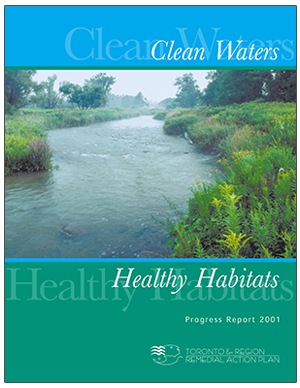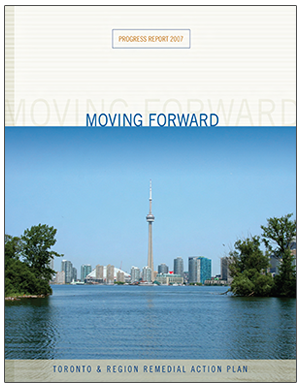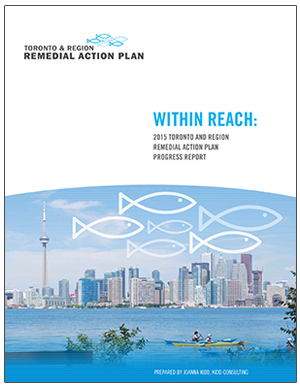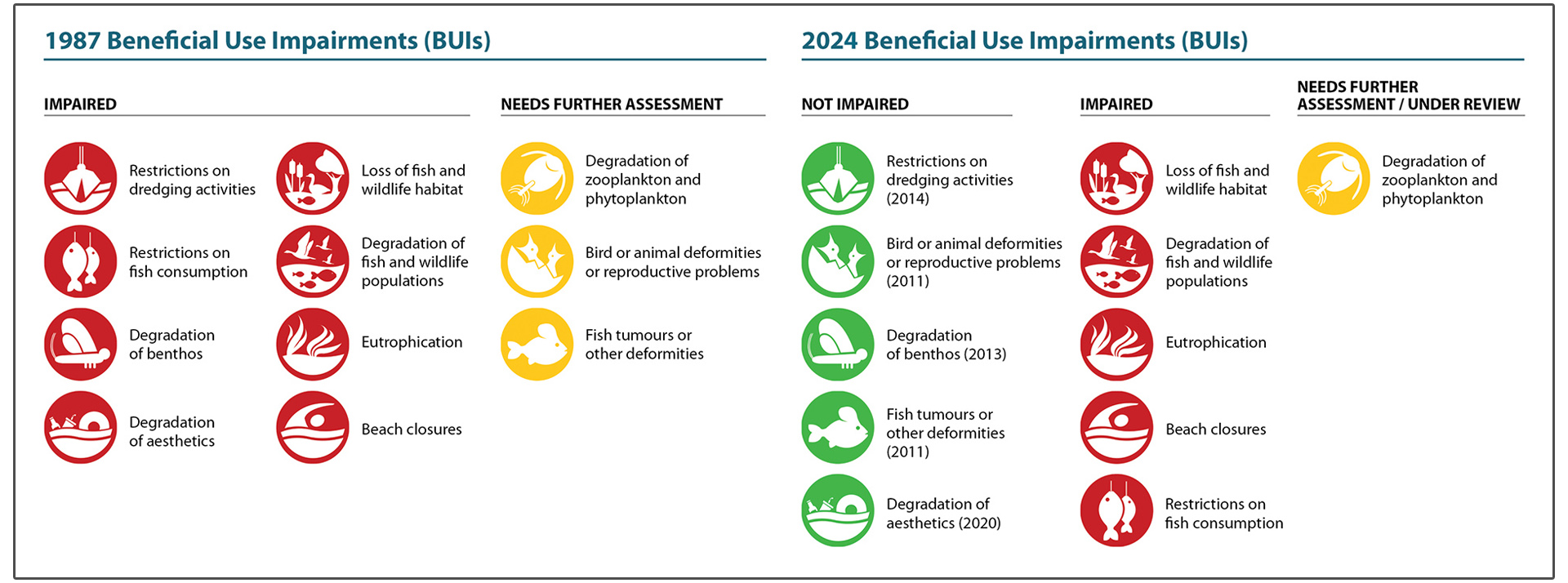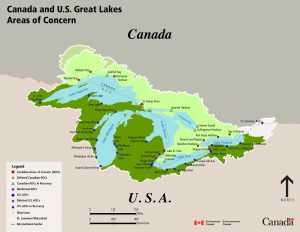
This agreement committed both countries to work together to “restore and maintain the chemical, physical, and biological integrity of the Great Lakes System”.
In 1987, Canada and the U.S. formally recognized 43 Areas of Concern (AOCs) around the Great Lakes: locations where local environmental degradation may be causing harm to the wider Great Lakes system.
Amendments to the original Great Lakes agreement committed governments in Canada and the U.S. to cleaning up Areas of Concern.
LEARN MORE
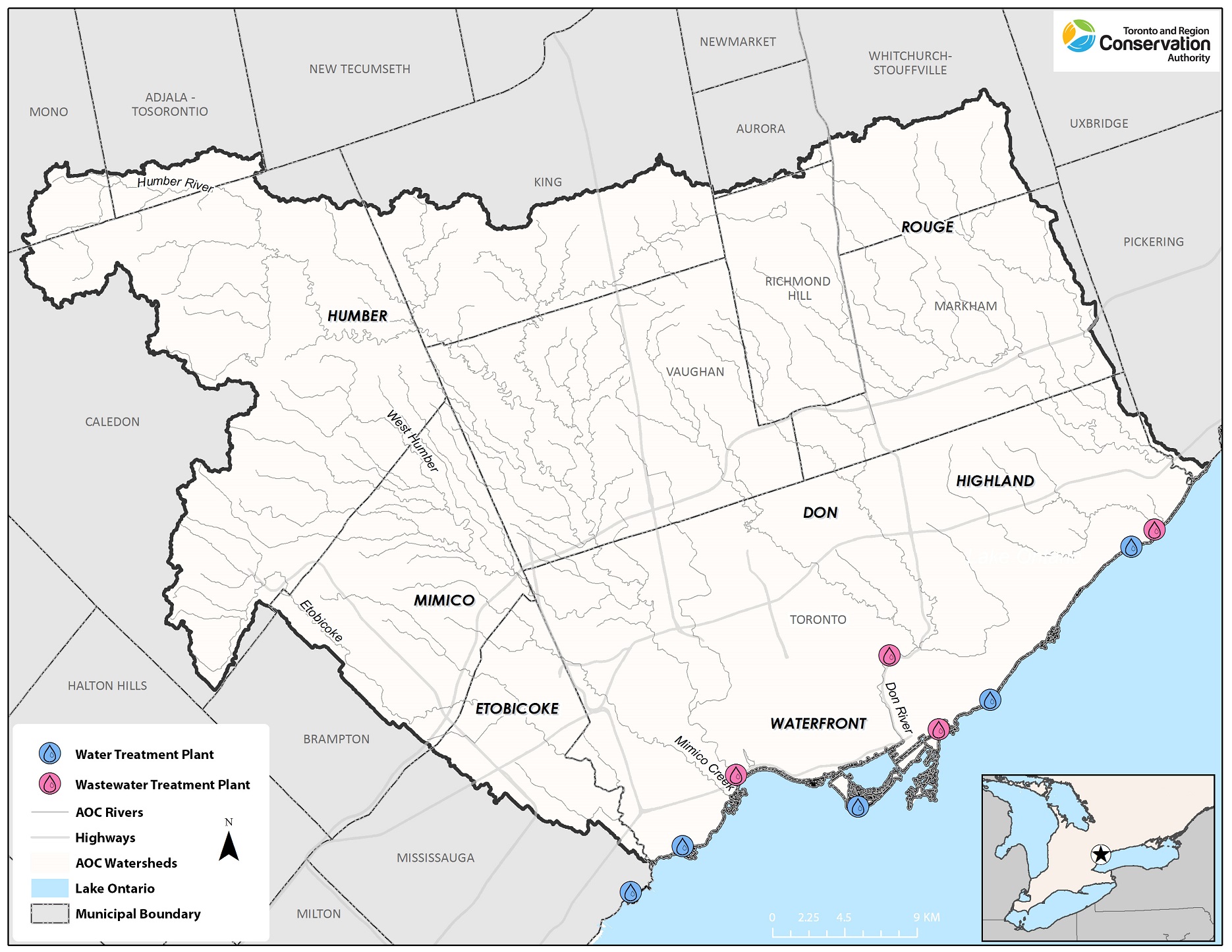
The Toronto and Region Area of Concern extends along the north shore of Lake Ontario from Etobicoke Creek in the west to the Rouge River in the east.
This 2,000 square kilometer area includes six watersheds and 42 km of waterfront, spanning eleven municipal jurisdictions with more than three million residents.
The status of an Area of Concern is determined by assessing the state of local environmental conditions against 14 different Beneficial Use Impairments (BUIs).
So what does that mean?
The waters of this region support a multitude of plant and animal species, and provide many benefits to residents, from drinking water to opportunities for recreation and tourism.
When something interferes with one of these human or ecological uses of the ecosystem, it’s called a “beneficial use impairment”.
When looked at together, the status of all of the BUIs tell us the overall condition of the Toronto and Region AOC.
Of the 14 potential BUIs, 11 were attributed to Toronto and Region AOC. See “Then and Now” to learn more.
The formal process for cleaning up an Area of Concern is called a Remedial Action Plan (RAP). Each AOC requires its own individualized RAP.
The goal of the RAP is to identify and complete restoration actions in order to remove an Area of Concern from the list of areas that pose a threat to the environmental health of the Great Lakes basin.
A local team tracks environmental conditions, activities, and outcomes relevant to the Remedial Action Plan.
Working with technical experts for each of the Beneficial Use Impairments (BUIs), a work plan is regularly updated with actions that would allow us to meet re-designation criteria.
If it meets the locally defined criteria then the RAP initiates a re-designation process by which the status of the BUI can be changed (i.e. from impaired to not impaired).
To understand the progress made in the Toronto and Region AOC, read the three major interim progress reports.
These reports detail environmental monitoring results and achievements in remediation initiatives, and assess how the conditions in Toronto and Region compare against the Beneficial Use Impairment criteria.
Great strides have been made in the restoration and revitalization of the Toronto and Region Area of Concern.
Not only have five impairments been re-designated, but clean-up efforts have resulted in a plethora of additional economic, social, and environmental benefits for the region, as described in this article.
View Comparison: 1987 vs 2024
Select image below to view full-sized.
Of the 11 Beneficial Use Impairments (BUIs) attributed to the Toronto and Region Area of Concern:
- FIVE have been re-designated as not impaired
- ONE requires further assessment
- FIVE remain impaired
The Toronto and Region Remedial Action Plan team and its partners are working diligently to address these remaining BUIs. For more information see Ongoing Actions.
In Ontario, the federal and provincial governments share the responsibilities for RAP progress and Area of Concern remediation under the Canada-Ontario Agreement Respecting the Great Lakes Basin Ecosystem (COA).
The administration and implementation of a RAP, however, includes a variety of departments at all levels of government, as well as non-governmental organizations, academia, business and industry, and the public.
The administration and implementation of a RAP, however, includes a variety of departments at all levels of government, as well as non-governmental organizations, academia, business and industry, and the public.
The Toronto and Region Remedial Action Plan (RAP) is managed by representatives from:
- Environment and Climate Change Canada
- Ontario Ministry of the Environment, Conservation and Parks
- Ontario Ministry of Natural Resources and Forestry
- City of Toronto
- Toronto and Region Conservation Authority (TRCA)

